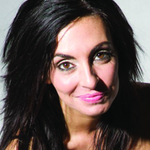Let’s be honest. We all have students who, in class, execute movement with ability, are focused enough to demonstrate they are retaining information and seem to comprehend the lessons being taught. They move well, show promising physical agility, travel across the floor deftly, pick up choreography, take correction (and even sometimes apply it,) show progress from week to week and dance center combinations with ease.
So what’s the issue, right? Well, what happens when that exact student is about as interesting to watch in class as watching paint dry? Imagine all of the above occurring week in and week out with no expression, no emotion and no sense of connecting to anything other than regurgitating the steps presented in front of them. Imagine your rehearsals running the same way. Numbers are clean enough, everyone knows their blocking, entrances and exits, partnering and transitions, but the emotional connection is void. How is a teacher supposed to trust that the performance element is being given the same consideration?
What students (especially younger students,) neglect sometimes is that performance is indeed a part of their technical training. How many times have we told students, “The steps are simply not enough?” Who cares if you can do a hundred turns, leap with the height of the high heavens or extend a leg and hold it for three minutes when the blank expression on your face and lack of any emotional component is prominent? What is important to convey to students is that audiences don’t see these elements deconstructed. They see a whole vision. They are moved by dance when it is an experience. They see moving bodies as a whole and want to feel what the dancers are feeling. That kind of performance begins in the studio.
I have run my own numbers time and again where I tell dancers, make sure you perform this time, only to get the exact same emotional output as the time before. When we discuss the relevance of performing in class, I get, “I can’t perform in class. I’ll do it when I get onstage.” No. No. No. No No. That doesn’t fly in my class, no matter the age or the level…and here’s why. Believe it or not, how you perform in the studio is EXACTLY how you are going to perform on stage. It’s habitual and when you “think” you’re performing, you actually are not giving out the emotional depth you think you are. It’s not about putting on fake facial expressions or mugging for the audience, it’s about giving an authentic performance.
Think about how many times dancers ask, “What should my face be?” Well….I don’t know, what do you feel? Having students understand that the performance element shouldn’t be something forced is critical. If you are genuinely connecting and having a good time on stage the smiles and the joy will be instinctual. Conversely, if it’s a serious or sad piece, finding elements they connect to, to help translate that comes with discussion of choreographer intent.
Performance, in varying degrees, should be occurring in all facets of class. There should be an energy exuded. At the barre, across the floor, in the center and during rehearsal. The more dancers get comfortable with the connection between emotion and movement, the better dancers they will be. The more likely they will stand out amongst hundreds of other proficient technicians and beautiful movers at auditions. The more likely they will work…consistently. The more likely to evolve into artists. It’s our job to expect that of them. Class performance should be the norm. It should be weighed as heavily as technique. The important thing to ask dancers is, “What is going to set you apart from all the others?” Remind them, “The only unique thing you have to give the audience, is you.” That is a part of training that needs to be nurtured and cultivated as much as stretching those feet and landing those turns. The trick for us is that, unfortunately our “teaching” of this component can only go so far. This is something that some dancers innately have and some don’t. It’s that unteachable quality, the x-factor.
Just remember, while we might not be able to turn every student into those dancers you just can’t take your eyes off onstage, we can teach them how to be better performers. To feel. To emote. To connect to movement. To create experiences for audiences…..and that……starts in class.
Good luck!
See you in the dance studio,
Jessie

